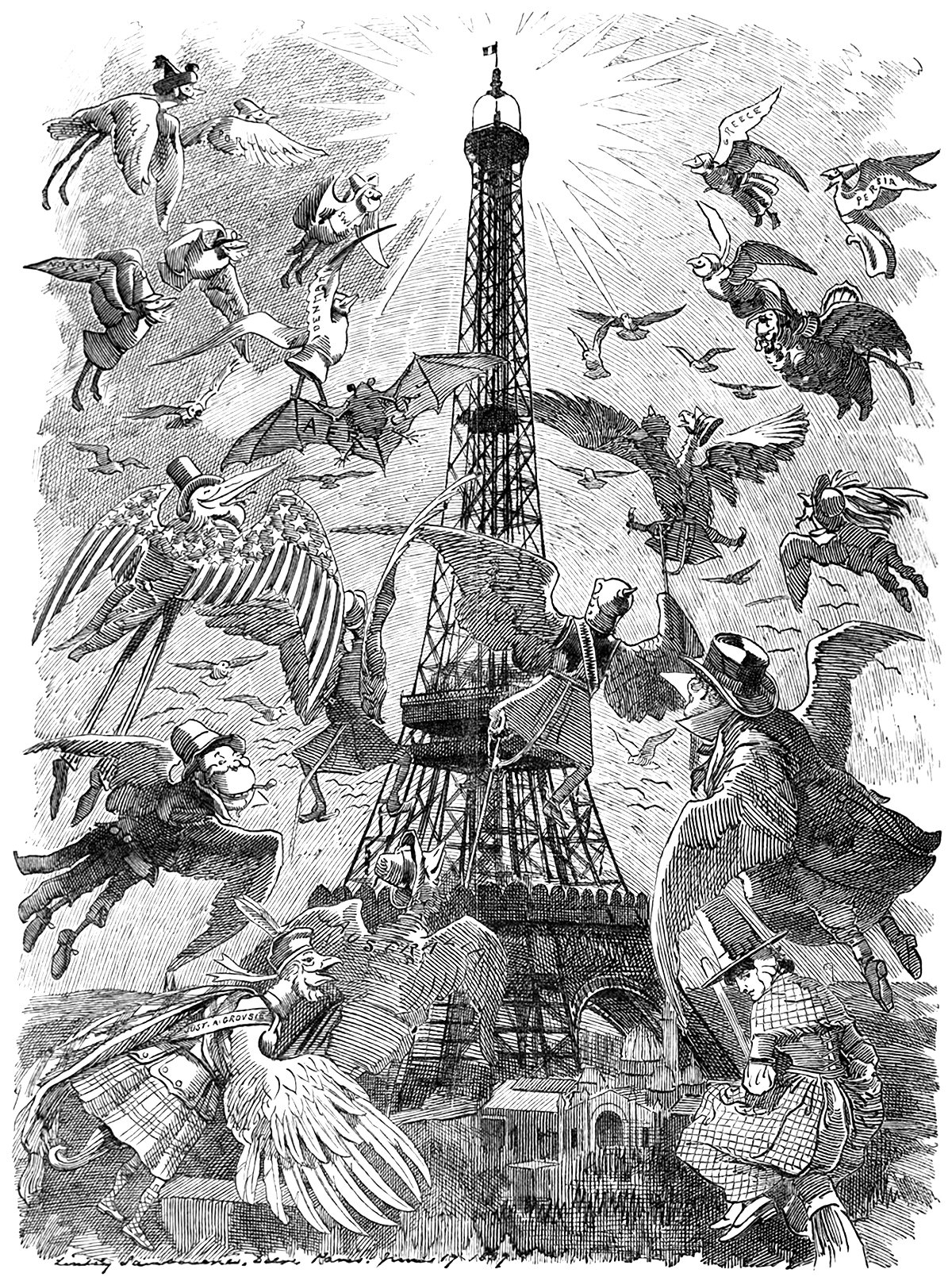The Eiffel Tower Effect
Illustration from an 1889 issues of Punch magazine, showing a flock of birds flying toward the Eiffel Tower. The birds represent the countries of the world, and the illustrator was trying to show the global magnetism of the structure.
When the Eiffel Tower was completed in 1889 for the World’s Fair in Paris, it changed the world. It re-defined what humans were capable of, and it gave the city of Paris an architectural icon that hasn’t faded with age. It was the tallest structure in the world, and it allowed its visitors to achieve verticality. As such, upon its completion the world took notice. Countless media sources reported on the structure, and it instantly took its place on the world stage. Pictured above is one such example of this. It’s an illustration from an 1889 issue of Punch magazine, and it shows a flock of birds flying toward the Eiffel Tower. These birds represent the countries of the world, and the piece was meant to symbolize the world’s envy for the iconic tower.
What I love about this illustration is the multiple references to verticality that combine to form it. First, the summit of the Eiffel Tower is shown as a shining beacon of light, attracting everything around it, including the flock of birds. This is a metaphor for the tower’s height, and thus it’s verticality, which is what made it so popular. Second is the flock of birds. On the surface, the birds represent the world’s attention being drawn to the tower because of its verticality. As such, all the winged creatures are flying straight toward the tower summit. There’s a deeper meaning to this as well, however. By depicting the countries as birds, the illustrator is referencing the human drive for flight, and overlaying it on the Eiffel Tower.
This combination of the tower and the birds taps into the two basic ways a human can achieve verticality. First, we can build structures that raise the surface level up as high as possible. This is done through architecture and tall buildings. Second, we can raise our bodies above the surface and fly above it. This is done through aeronautics. By combining these two methods, the historic significance of the Eiffel Tower is brought into focus. It’s not just about the tallest building in the world. It’s about the human need for verticality and the ability to achieve it by visiting the tower.
Check out other posts about the Eiffel Tower here.
Illustration originally published in Sambourne, Edward Linley. “Great Attraction: Birds of all nations flying to La Tour Eiffel.” Punch 96 (29 June 1889): 322.

